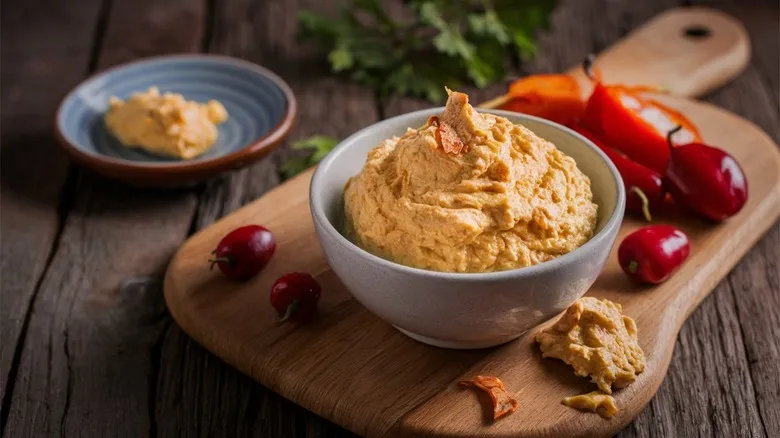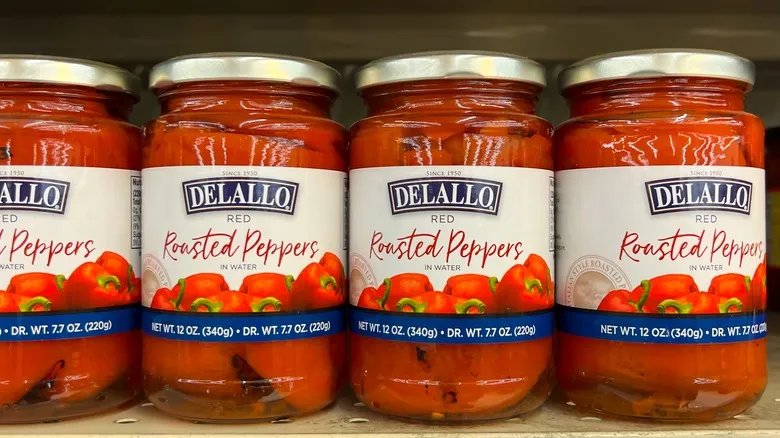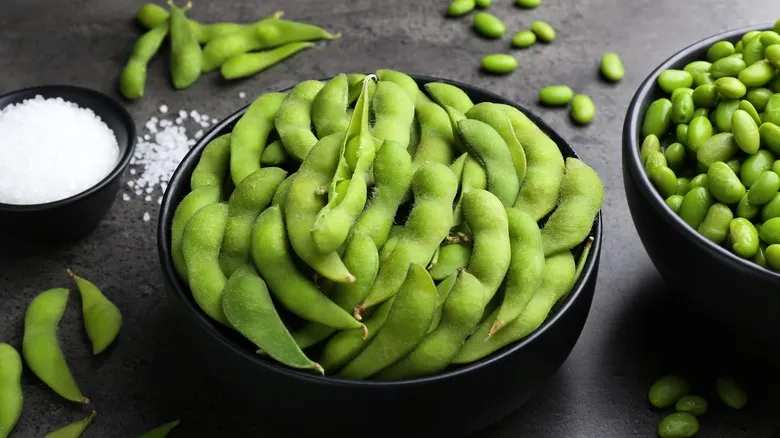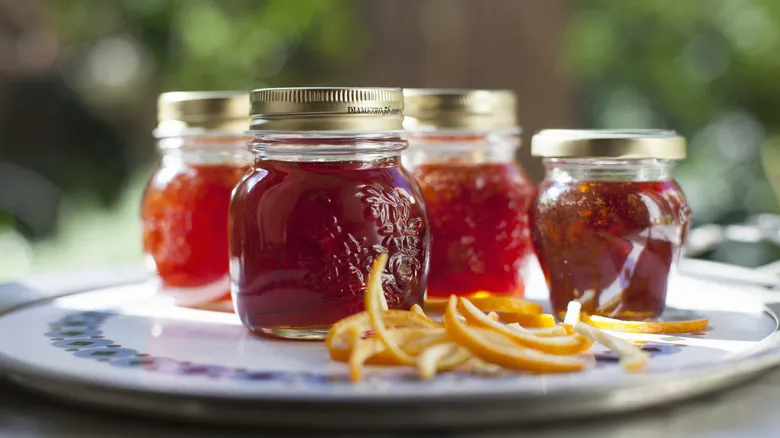Pimentos are sweet peppers commonly associated with cheese and olives

Often referred to as cherry peppers, pimentos are distinguished by their sweet, juicy flavor, small size, and vibrant color. For most consumers, pimentos are primarily recognized not as whole fruits but as a key ingredient in pimento cheese, a creamy dip beloved in the Southern United States, perfect for pairing with a BLT or a fried green tomato sandwich. Additionally, pimentos are commonly found as the stuffing in pitted green olives. While the reason for their popularity as olive stuffing isn't entirely clear, their bright red color and mild taste offer a pleasing contrast to the strong flavor of green olives.
Fresh, whole pimento peppers are rarely available in grocery stores; they are typically found in diced or canned forms. Beyond their use in cheese spreads or as olive stuffing, pimentos can be utilized in cooking similarly to any mild red pepper. They add a crunchy, colorful touch to sandwiches or salads, or can be pureed and incorporated into pasta sauces. Pimentos are also one of the varieties of chili peppers that are often ground to produce paprika.
Jarred roasted red peppers are a prepared form of bell peppers

While jarred roasted red peppers may resemble pimentos, they actually originate from red bell peppers. According to the journal *Scientia Horticulturae*, around 36 million tons of bell peppers are produced globally each year, making them one of the most commonly grown pepper varieties. They are available in grocery stores in various forms, including whole, fresh peppers, but they are also popular in prepared forms due to their abundance.
To create the roasted red peppers found in stores, manufacturers slice and flame-roast red bell peppers, then peel and pack them in jars filled with liquid, typically water or olive oil. The final product is tender, more flavorful than fresh bell peppers, and versatile for use in a variety of dishes, such as pizza, pasta sauce, or deli sandwiches. Purchasing pre-cut roasted red peppers saves you the hassle of cutting them yourself and avoids the risk of a seed explosion—though if you do have a whole bell pepper, there’s a cutting technique to help reduce that risk.
Recommended

What Happens If You Drink Spoiled Milk?

Are Soybeans And Edamame The Same Thing?

Jam Vs Jelly: Here's The Difference Between The Two

The Secret To Perfectly Cooked Bacon Is An Ingredient Everyone Has
Next up

